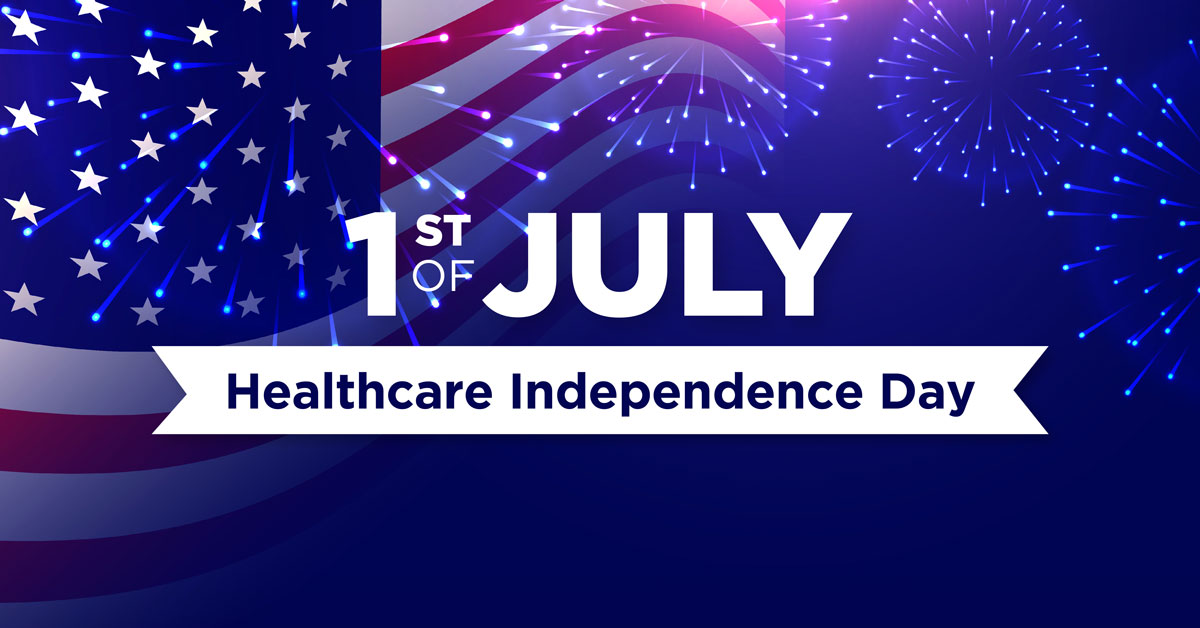
Americans should now consider July 1 as “Healthcare Independence Day.” Why? Because on July 1, 2022 the nation can celebrate an incredible victory for the hundreds of millions of people who have been deprived, for far too long, of the real freedom to choose amongst healthcare providers who truly compete for their business—by offering fairer prices or better service.
Beginning July 1, 2022, employers who offer health plans, but who have not posted their Machine-Readable Files (MRFs) to the internet can begin to be fined $100 per health plan member per day for failing to comply with this first component of the groundbreaking Transparency in Coverage Rule. For a typical 500 employee company, that can mean annual fines of $35,000,000.
The healthcare system has a long way to go to become a truly transparent, competitive marketplace, but MRFs are a real and historic step in that direction. They disclose an enormous amount of data about how much particular healthcare providers will actually be paid when employees decide to use their medical services. This includes the negotiated rates for every in-network provider and the historical payments to, and billed charges from, out-of-network providers. Soon, MRFs must also include in-network negotiated rates and historical net prices for covered prescription medications, broken down by health plan or prescription issuer and by pharmacy.
The real prices for tests and procedures have been hidden by a nearly impenetrable system of behind-the-scenes deals with healthcare providers, hospitals, laboratories and other entities that allowed American consumers to know only what their co-pays were, hiding the real prices those consumers would end up paying, counted in dollars drained from their health savings accounts or skyrocketing health insurance premiums.
No one wants to see any company fined, but the Biden Administration has given companies plenty of notice. The deadline to comply with posting MRFs had been set for January 1, 2022. The Administration extended it until July 1 for those companies who were earnestly working to meet the deadline, but needed more time.
Further extensions would be unfair, and elected officials seem to know it. Healthcare consumers have been waiting too long, bearing the burden of hidden pricing paradigms that have deprived them of the freedom—yes, the freedom—to choose for themselves whether to pay one provider 500 percent or 1,000 percent more than another (a difference in price which is not unusual), for the very same test or procedure, of the very same quality, just a few miles away.
July 1 merits being dubbed “Healthcare Independence Day” because it heralds the start of our nation acknowledging that American healthcare consumers are not children. They are not wards of the state, nor are they “lives” owned by health insurance companies. They deserve all the facts necessary to “vote” with their feet and with their wallets as to who they select to pay for healthcare services, based on how much those providers actually charge.
Requiring posting of MRFs is a watershed moment for healthcare consumer independence, and much more knowledge will soon be turned into consumer power. By January 1, 2023, every employer must provide employees an online shopping tool featuring 500 shoppable services and provide individual estimates of out-of-pockets costs to employees for those 500 services. A year later, by January 1, 2024, all other procedures, drugs, durable medical equipment and any other item or service must be published, too.
Just as we look back and wonder how it could have been that Americans were taxed without representation or how women were denied the right to vote, our nation will one day look back and wonder how it could have been that hundreds of millions of us once purchased healthcare services without being allowed to know the prices we were actually paying. Starting July 1, that surrender of our rights to self-determination in accessing healthcare will begin to be “history.”
